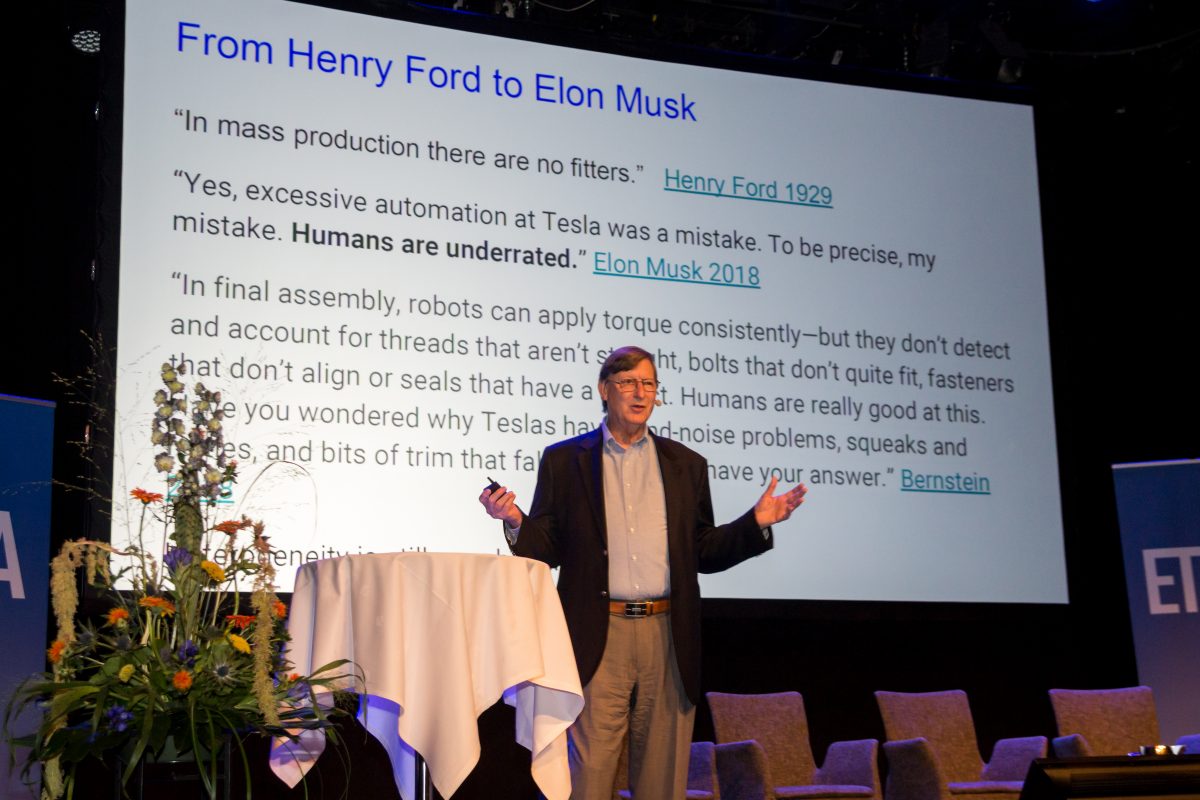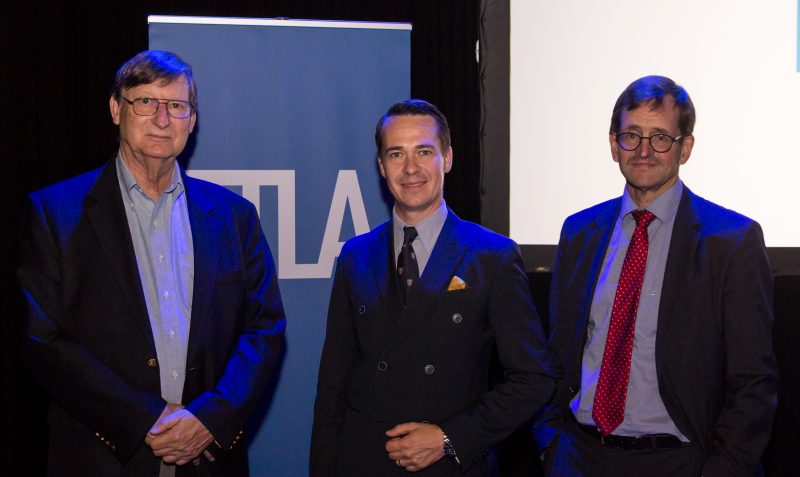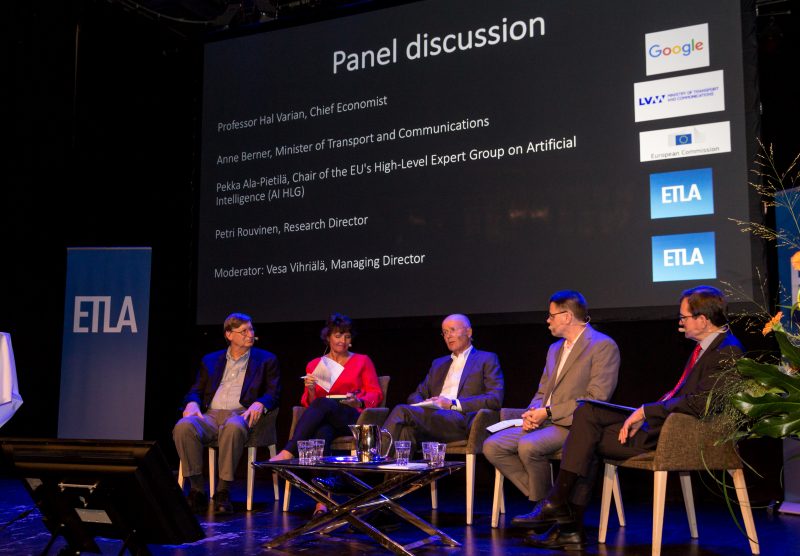
Google’s Chief Economist Hal Varian: “The challenge of aging is common”
Technological change has been acting as the driver of economic growth throughout the entire industrialization period. Economic growth, on its part, has provided health and spare time for people.
However, the changes have not always been painless. Some jobs have disappeared with the mechanization.
– What people want; more jobs and less work. And this can be done with technology, says Google’s Chief Economist, professor Hal Varian.
He spoke about the future of work and the impact of artificial intelligence (AI) on August 30th in Etla’s KeyNotes Seminar at the Old Student House in Helsinki. The seminar is a continuation of Etla’s international BRIE-ETLA cooperation, which started in 2001 (Berkeley Roundtable on the International Economy at the University of California, Berkeley, BRIE).
Hal Varian, who was educated at MIT and Berkeley, contemplates automation and demographic factors simultaneously. As automation reduces the demand for labor, the aging of the population, in turn, reduces labor supply.
Thanks to technology, moving to a new level will reduce wages and the need for labor. Aging on the other hand means that the supply of labor is lower, and the level of wage rises.
Estimates of the impact of automation on professions vary greatly. The estimates from six research institutes range between 10 and 50 percent.
– Automation does not take jobs, but it removes monotonous and repetitive work, says professor Varian.
He presents US census statistics, according to which there were a total of 270 registered professions in 1950. Only one profession (i.e. the elevator operator) has been eliminated due to automation, and even for them, other jobs have been found for example from security and reception.
Varian also discussed what would happen if we became extremely productive.
-If automation increases productivity by 25 percent, we can use four days a week rather than five. We can work less and spend more, he says.
However, there are jobs such as floor cleaner or a caretaker that are more difficult to automate.
-Robots work best in a standardized environment and in repetitive tasks. Half of all industrial robots are in car factories. Heterogeneous environment is much more difficult. Automation is not always satisfactory in automotive industry either.
Elon Musk has said that the far-fetched automation of Tesla’s production was a mistake, his mistake.
– People have been underestimated, Varian cites Musk.
A labor shortage poses a threat to several developed economies, and low birth rates do not bring relief to that.
Varian gave an example from America, where between 1946-64, a generation of “Baby Boomers” were born. This increased the workforce after 20 years, as well as the transition of women to paid employment.
Now, the situation is another, as the Baby Boomers generation will be retiring soon. There are currently 46 million people over the age of 65 in the US and in 2060 approximately 98 million, about 24 percent of the population.
– Demographic impact on the labor market is 53 percent higher than the impact of automation. If productivity growth was 1.6 percent and not estimated at 1.3 percent, we could cover the impact of aging, Varian says.
Therefore, countries with the same age structure of the population invest most in robots. These countries are especially South Korea, Japan and Germany.

Finland and the other Nordic countries have embraced rather than opposed new technologies and free trade.
-A small country with limited resources and hard weather conditions opposing has never been an option,” stressed Carl Haglund, President of Etla’s Chairman of the Board, when opening the event.
In the transition to a dynamic market economy, social security networks, education and training policies have been facilitated by adaptation.
-The Nordic countries have managed to raise both GDP and well-being to a high level. Income differences are low compared to international standards, and they have not grown substantially over the last couple of decades, Haglund stressed.
However, there are no guarantees that success will continue.
– The speed of technological change is relentless. Digital technology, and especially AI, have raised some concerns about the massive disappearance of jobs. How do we get along with this, Haglund asks?

After Professor Varian’s presentation, the Etla’s KeyNotes debate continued with a high-level panel, moderated by Managing Director Vesa Vihriälä.
Minister of Transport and Communications Anne Berner welcomed the new possibilities of change: AI, automation and digitalization are the trends that serve as a continuation of long-term globalization. According to Berner, the boundaries of the various sectors are disappearing, just like the borders between them.
However, changes have similarities with Henry Ford’s time. There is also a change in how rapidly-disruptive technologies change things. Now they are at their best in a couple of years.
According to Berner biggest challenges and opportunities are in the legislation. Are we ready to change them?
Pekka Ala-Pietilä, chair of the high-level intelligence expert group in the European Commission, emphasized the possibilities of AI. AI and related technologies are major accelerators with many dimensions, such as impact on workload and skills.
Ala-Pietilä recalled how the internet and mobile phone have completely changed the way we work and communicate. AI will do the same, and even in a higher level. However, this is not a straight path and learning is an important part of the path. Winners are the ones that learn to apply artificial intelligence.
Etla’s Research Director Petri Rouvinen wondered how strong the transition in the labor market is under way. Rouvinen does not believe in soft change and is concerned about what will happen in the next ten years. At that time, disruption is underway in many industries. Digital platforms create completely new ways to work, with complex implications for the job markets as well. Automation will also face professions of expertise and cognition, such as lawyers and doctors.